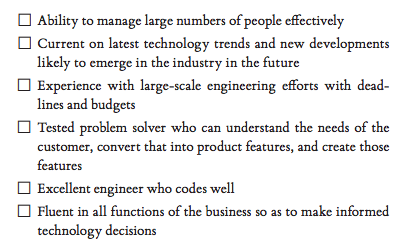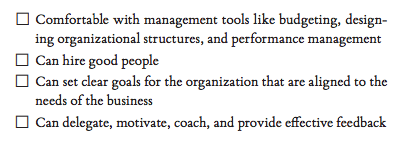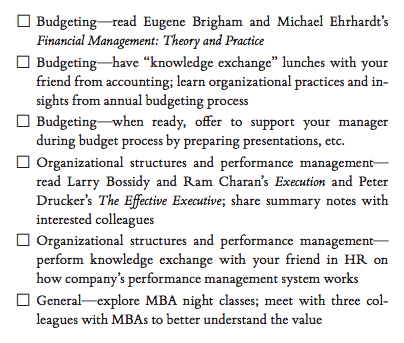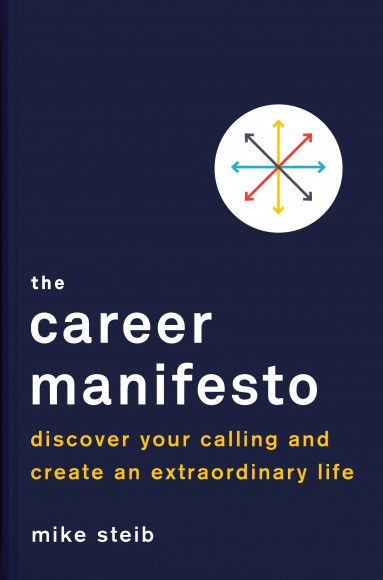How to Build the Career Roadmap That Leads to the Job of Your Dreams

I started my current career journey when I was 25. I had a prestigious job at a highly regarded company analyzing potential acquisition targets for the executive team, regularly discussing our findings with some of the most important people in a very sexy industry. I worked with smart, cool people, and my parents were proud. But something about the job, deep down, didn’t feel right, and it was making me unhappy, though I could not put my finger on why. The hours were lousy, but I had been working all-nighters since high school and that had never been a problem. I felt overdue a promotion (as usual), and couldn’t help but notice the disproportionate money my friends in finance were making, so I assumed that was it, and that once I was finally made a vice president I would be happier.
Then a friend who was a kindergarten teacher invited me to speak to her class at career day. I told the kids that I helped “come up with big ideas,” “buy companies,” and “identify synergies.” During the Q&A session, one little girl approached me and asked her prepared questions:
“Do you work in New York City?”
“Yes, I do – I love New York!”
“Do you bring your lunch to work?”
“No, I usually buy a salad, but that is a really good idea!”
“Is your job important?”
“What?”
“Is your job important?”
“Well, we guide overall capital allocation, which is a key driver of shareholder value. And, granted, the M&A deals do not always work, but we execute those deals and someone has to do that. And look, the business leaders don’t have the overall view of the strategic landscape that we do, and –”
“I’m supposed to write down yes or no.”
“Oh. Um … no?”
And there it was. All my ambiguous work anxiety, my fixation on the next promotion, the residual unhappiness that slipped from my workday to my personal life, and it took a child’s simple question to illuminate the issue.
This was a perfectly good job. But I had always believed my best work would come when I was leading and executing, not strategizing. I felt that the world is moved forward by people who build, motivate, and direct great teams to do big things. I was not doing that, and I was not learning how to do it. It was a truly great job, and it was not the job for me.
I began a soul-searching exercise that would eventually lead me to develop the Impact Map and Happiness Matrix. I kept redrawing the Impact Map and redesigning my Happiness Matrix until I felt I had the direction my life needed. I faced the fact that I wanted to lead others, be accountable for the success of the team, and have an important impact on the lives of customers. I also knew that I wanted to do this in the context of marrying my amazing girlfriend, making a life in New York City, having kids and being a good dad, and giving back to my community by contributing to education and getting underprivileged people back to work. If I succeeded, maybe I would write a book. If I pulled all of that off, I would be proud of my eulogy.
Just one problem remained. I had virtually none of the qualifications or experiences I needed.
By this stage of our journey, you are probably in a similar situation. The career path you desire requires experience doing the job, but how do you get experience without getting that job? The average person is sitting in her role waiting for the person above her to retire or get fired to create an opportunity. But not you, not anymore – you create opportunities.
We are going to do a couple of exercises to build the Career Roadmap that will help you realize your dreams. This is how I planned the career path that I wanted, which guided me on countless occasions to take on the right new roles, volunteer for relevant additional responsibilities, seek out mentors and coaches who could teach me what I needed to know, read the necessary books, and so on. These exercises are simple, clarifying, and will light the way to your career destiny.
Let’s pick an example, and pretend you have decided that your career purpose is to be a senior technology leader of a company in the eCommerce space, building an online shopping experience that brings lower cost and improved convenience to millions of people’s lives while lowering the environmental waste of brick-and-mortar shopping. To clarify this picture in our minds, let’s call this role chief technology officer (CTO), though you may figure that running a large technology team with any title would be a great career destination.
Write down the names of all the CTOs in your industry of interest that you can think of. Google something like “best CTOs in eCommerce.” Study their bios and look for the patterns in their career paths to learn what skills, experiences, and achievements they have amassed. Start recording your observations. Seek other avenues to enrich this list, perhaps by talking to friends of friends who are in the higher ranks of technology organizations, reading books on the topic, and so on.
As your research is coming together, your list of needed skills, experiences, and achievements may look something like this:

This list is going to form the foundation of what is essentially your career to-do list. Some of these items will appear clear and achievable, like staying current on latest technology trends, while others, like managing a hundred people, will seem insurmountable. Don’t panic – when I first performed this exercise and reviewed the bios of successful CEOs, the only person I had ever managed was Felix, the summer intern. You just have to make a plan. As Henry Ford once said, “Nothing is particularly hard if you break it down into small jobs,” and then he turned a horse into a car. For you, then, the next step is to break down each of these characteristics into the small jobs that are easier to visualize and plan to achieve. For instance, let’s break down the first item from the list, “ability to manage large numbers of people effectively,” into some of the components it might entail:

So, while you may have struggled with the leap from where you are now to CTO-level organizational leadership, learning the component parts like “hiring good people” is not so daunting. Next, you are going to make a plan to learn and demonstrate each of these tasks in the coming years of your career. Again, we will break down the first item in the list above, “comfortable with management tools like budgeting, designing organizational structures, and performance management”:

You will do this exercise for each item on the checklist. A few may be achieved just through the normal course of your work; for example, if you are currently a software engineer, your day-to-day work and hands-on learning may already support something like “excellent engineer who codes well.” Others are learning experiences that will likely never present themselves to you unless you are magically promoted into the big job or you create the synthetic experiences, like those illustrated above, that will give you your first taste of the new skill. This checklist will inform the action items you tackle every week of your career. Write it all down, set deadlines, and commit. Each time you execute one, you will learn, grow, and demonstrate success in some way that helps advance your plot.
There are some keys to getting your Career Roadmap and its execution right. Here are a few snippets of advice that others have found helpful:
Commit to an Unusual Path
Achieving extraordinary outcomes will require unusual measures. Very few of your colleagues, classmates, and friends will have a Career Roadmap; most of them will be measuring their success in titles, compensation, and awards, and behaving accordingly, rarely with a clear-eyed plan for their future. Many of the people senior to you in your chosen profession will be guilty of the same – if enough people just do what is expected of them, eventually a few of them will be made senior vice president. Most people will find the idea of a big detailed plan for their future to be somewhere between odd and off-putting.
They will also find some of your career choices to be confusing. Not long after a kindergartner had shamed me for being misaligned from my career purpose, my team had begun negotiating the largest acquisition in the company’s history. Everyone was salivating over putting this career-making deal on his or her resume. At the same moment, a mentor of mine, who understood my Career Roadmap better than I did at the time, offered me a long-shot opportunity to develop and launch a new channel for the company, which would provide me with extensive operational and leadership experiences. For the next few months, the whole team worked excitedly on a deal that consistently graced the cover of the Wall Street Journal, while I played alone in the corner developing a new business plan. That channel became my first business launch, my first management experience, my first P&L responsibility – and it catapulted my career in the arc of my
new Career Roadmap.
I have yet to read in the autobiography of an important person, “I just did what everyone else did and, wow, here I am.” If you do what everyone else does, you are going to get what everyone else gets. I want a lot more than that for you. Achieving your Career Roadmap
requires a commitment to executing your own path.
Do Your Research
Your Career Roadmap calls for you to advance in your field well beyond your current scope of knowledge. By definition, that means you are making big assumptions and plans regarding a career and jobs about which you are at least somewhat ignorant. In ways you cannot yet see, your plan is wrong. Poring over books, articles, blogs, and TED Talks on relevant topics can help. And there is no substitute for talking to someone on the other side of the journey.
Delightfully, people are usually happy to share their advice; the successful tend to be motivated by service or by ego, and telling someone else the secrets of their success is consistent with both. With some hustle, you can gather a lot of insight and inspiration. For instance, in the exercise above, we strategized a CTO career path and collected a list of top CTOs in the industry. With some time on Google and LinkedIn, you could find a way to get in touch with each one of them and ask if you could visit or call them for fifteen minutes of advice, and if that would be too much trouble, could you email a question or two. At least one, likely more, will say yes. If you can find someone in your network who knows an individual on the list and agrees to make an introduction for you, your likelihood of success increases tenfold. Ask them what propelled their career. Ask what they look for in top talent. Ask if the items on your Career Roadmap are consistent with their career observations. Ask them, if they had to go back 15 years and do it again, what they would do, knowing all that they know now.

Enter Into a Career Covenant With Your Manager
Your current manager can have a significant impact on your success. If advancement in your company is a component of your career plan, she can advocate for you at critical junctures, like when promotions are considered. Even if your Career Roadmap points in a different direction, your manager is someone who regularly observes your work and can provide valuable feedback and advice. Recruiting your manager to be a part of your Career Roadmap is key to success.
Michael Feiner writes in The Feiner Points of Leadership that a leader’s responsibility is to deliver on a “career covenant,” agreeing to provide skill development, performance feedback, advice, and career sponsorship to employees who deliver good work. You can initiate this relationship by asking your boss explicitly if she would be willing to provide this mentorship, and if she’d dedicate a fraction of your one-on-one meetings to coaching you on your career plan. Here you could discuss elements of your Career Roadmap and solicit advice or introductions as you work your way through it.
Your boss’s commitment to a career covenant with you also opens the door for you to take on “side hustles” – bonus projects that will develop new skills and experiences for you and benefit your boss. For instance, you may conclude that you need to become a better interviewer on the path to learning to be a manager, and you ask if it would be appropriate to join your boss for interviews and take notes for her and send her the summary. At some point in the future, you might be positioned to do first-round interviews for your manager and screen out candidates who are not worth her consideration. Or you may have a Career Roadmap action to learn marketing, so you are reading a few books on the topic and you offer to take a crack at producing a new marketing brochure for customers describing one of your team’s services. If you deliver in your day job and in your side hustle, you will continue to build your manager’s trust and receive more and more responsibilities. This has the added benefit of distinguishing you as a person who is learning the craft at the next level, which puts you on the radar for promotion.
Your side of this bargain is the heavy one: You need to do excellent work in your day job, keep your relationship with your boss focused on the work she needs the team to get done, and then create added time for the coaching and advice. You will very quickly lose your manager’s support and goodwill if your assigned work appears to be slipping because of your focus on longer-term goals. You can be both Superman and Clark Kent, but you have to get your articles in on time.
Be a Giver, Not a Taker
Blatantly ambitious people often come across as needy, selfish climbers. There is a way for you to be ambitious without being that kind of person: Frame your Career Roadmap and your career discussions in the context of what you want to contribute and how you want to help. You could, using the interviewing example above, just go to someone in human resources and impose on his time to learn how to interview. Alternatively, you could say, “I have always respected professionals who value their people and understand HR and am hoping to be able to do the same someday. If this is something important to you, too, could I pick your brain? I don’t know if you have interest in engineering, but I would love to repay the favor if you ever want to see how we do it.” The latter is a sincere exchange and one to which an HR professional who cares about his craft will likely be excited to contribute.
There will be people upon whom you impose – for instance, the successful people in your field whose advice you solicit – to whom you can’t really provide much value today. But you will someday, and it is important that as you progress along your path, you do not forget the people who helped you get there. In the meantime, there is always someone junior to you, who could use your help in one way or another. If you have read this far, you would probably make a good mentor to someone else. Pay it forward.
Change Jobs Thoughtfully and Purposefully
Your job needs to be important to you, aligned to your Happiness Matrix, and challenging to you in ways consistent with the demands of your Career Roadmap. Unfortunately, many settle into jobs that do not achieve these principles. Some are aware that their job is not right, but are afraid of making a mistake, so they wait for the “perfect opportunity” to come along next. Others may not be comfortable pushing themselves to the next level, getting soft and lazy instead, convincing themselves that they have worked hard to get here and deserve to sit back and enjoy it for a while. The problem is, if you are not moving forward in your career, you are moving backward, because there are ambitious people all around who are gunning for the next challenge and are going to take your seat. The alternative to an extraordinary career is not an easy and comfortable career; it is failure.
Properly executing your career plan requires constantly assessing your current role and other potential roles in the context of your Career Roadmap. This does not mean opting instead for job hopping; variety without a strategy is hardly better than sitting passively with the same old responsibilities. It does mean working relentlessly through your checklist of skills and experiences you need to achieve the next level. A well-managed career covenant with your manager can help to maximize what you are learning in your current role, but at times the next set of lessons will require a new job with your employer or with a new organization. For instance, your employer may not have management opportunities available for you, but another, faster-growing company does. Or your career plan may require you to work in a different industry or region, necessitating a move. Another company may be more willing to give you ownership of your own budget or some other broader responsibility. Or perhaps your Career Roadmap is leading you to starting your own business. Your job may change a dozen times over the next few decades; the key to a successful career is making those decisions proactively, with a focus on accomplishing the items in your Career Roadmap as quickly and successfully as possible, while continuing to honor your personal values.
With regularity, you should assess your current job as well as other jobs for which you may be qualified in the context of your Career Roadmap. As you do so, keep in mind the human bias to overvalue what you have and undervalue what you could have; when comparing opportunities, pretend you are already in the other job you are considering, and ask yourself if you would leave it to take the job you have now. If not, then it is time to think harder about making a move.
Fundamentally Change How You Think About Time Management
Most people see their lives in two parts: working and playing. Either they are required to be at work to get their job done, or they can do whatever feels fun. Executing an extraordinary career and life requires a radically different approach. You have to set goals and action items and deadlines, and a good number of them need to be due this quarter. They must be in your calendar and you have to commit to them. You should be checking in on your plan regularly, assessing and adapting your plan based on your progress. Leaving work on Friday for two days of mindless fun and returning Monday morning sleepy are for someone on a different path. To achieve your career goals, we are going to stack the calendar with the routines that are fundamental to your success.
Don’t Lose Sight of the Big Picture
The examples offered here focus on work-related strategies and tactics because they are the most universally relevant (we all suffer from email overload and endless meetings). However, that is not meant to imply that work is more important than the other things you value in life – family, friends, and community may play a more prominent role in your life than anything you do at work this year. My goal is to help you succeed in your career as part of an impactful overall life plan.
Therefore, your Career Roadmap should accommodate, and force thoughtful trade-offs among, the things that are truly important to you. You could spend all your waking hours working on your Career Roadmap, but that would come at the expense of your relationships with the people you love. A big promotion to a role full of international travel may fill important gaps in your Career Roadmap, but if that conflicts with your important responsibilities as, say, a new parent, you may be wise to decline. Being the first to reply to the boss’s emails may earn you goodwill at work, but a life spent glued to your screen may not be the eulogy you were looking for. Having a clear plan for each of the things truly important to you, and investing the time and focus each deserves, is the balance required for an extraordinary life and career.
Adapted from The Career Manifesto by Mike Steib, copyright (c) 2018. Published by TarcherPerigee, a division of Penguin Random House, Inc.
Mike Steib is the president and CEO of XO Group, a family of brands that includes the popular sites The Knot, The Nest, and The Bump.

